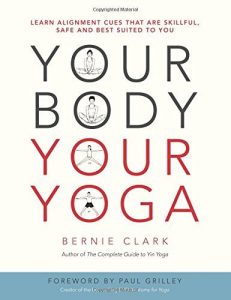Yoga is big business today, and teacher training programs are booming. Yoga teachers have a thirst for anatomy training, but all books on yoga anatomy focus solely on the muscles. Your Body, Your Yoga goes beyond any prior yoga anatomy book available. It looks not only at the body’s unique anatomical structures and what this means to everyone’s individual range of motion, but also examines the physiological sources of restrictions to movement. Two volumes are provided in this book: Volume 1 raises a new mantra to be used in every yoga posture: What Stops Me? The answers presented run through a spectrum, beginning with a variety of tensile resistance to three kinds of compressive resistance. Examined is the nature of muscles, fascia, tendons, ligaments, joint capsules, bones and our extracellular matrix and their contribution to mobility. The shape of these structures also defines our individual, ultimate range of movement, which means that not every body can do every yoga posture. The reader will discover where his or her limits lie, which dictates which alignment cues will work best, and which ones should be abandoned. Volume 2 will take these principles and apply them to the lower body, examining the hip joint, the knee, ankle and foot, and will present how your unique variations in these joints will show up in your yoga practice.
Your Body, Your Yoga has over 500 illustrations and photographs. For the technically astute, extensive endnotes are provided, along with a exhaustive index. Technical sidebars (labeled It’s Complicated) allow a non-technical reader to skip the heavier, more detailed discussions and stick to high-level explanations of the concepts. For yoga teachers, sidebars (labeled To the Teacher”) are offered to help them bring the concepts into their classes. Other interesting discussions that could disrupt the normal narrative flow are also put into sidebars (labeled It’s Important), which everyone is invited to read.
Your Body, Your Yoga has over 500 illustrations and photographs. For the technically astute, extensive endnotes are provided, along with a exhaustive index. Technical sidebars (labeled It’s Complicated) allow a non-technical reader to skip the heavier, more detailed discussions and stick to high-level explanations of the concepts. For yoga teachers, sidebars (labeled To the Teacher”) are offered to help them bring the concepts into their classes. Other interesting discussions that could disrupt the normal narrative flow are also put into sidebars (labeled It’s Important), which everyone is invited to read.












